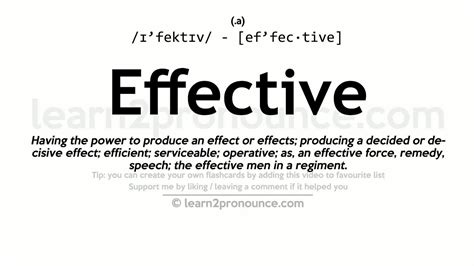Optimize workout frequency & intensity for peak strength gains and faster recovery?

The Crucial Balance: Frequency vs. Intensity
Achieving peak strength gains and ensuring swift recovery isn’t just about showing up; it’s about intelligently structuring your workouts. The sweet spot for muscle growth and performance lies in a delicate balance between how often you train (frequency) and how hard you push yourself during each session (intensity).
Understanding these two pillars of training and how they interact is fundamental to unlocking your full potential. Too much of one without enough of the other can lead to stagnation, injury, or burnout. The goal is to create a stimulus strong enough for adaptation but not so overwhelming that it impedes recovery.

Decoding Workout Frequency
Workout frequency refers to how often you train a specific muscle group or perform a particular exercise within a given timeframe, usually a week. For instance, training your chest twice a week means a higher frequency than once a week.
Benefits of Varying Frequencies:
- Higher Frequency (2-4+ times/week per muscle group): Often linked to greater total weekly volume for a muscle group, potentially leading to faster strength gains and hypertrophy for many individuals, especially beginners and intermediates. It allows for more practice of movement patterns and greater protein synthesis stimulation over time.
- Lower Frequency (1 time/week per muscle group): Can be effective for advanced lifters who can induce significant fatigue and muscle damage in a single session, requiring more recovery time. It also allows for longer recovery periods between sessions for specific muscle groups.
Optimal frequency often depends on your training age, recovery capacity, and the intensity and volume of each session. A good starting point for many is 2-3 times per week per major muscle group.
Mastering Workout Intensity
Workout intensity refers to the effort level and load used during your training. It’s not just about how heavy the weight is, but how close you are to muscular failure. Common metrics include a percentage of your one-repetition maximum (%1RM), RPE (Rate of Perceived Exertion), or simply the number of reps in reserve (RIR).

The Role of Intensity:
- High Intensity (e.g., >80% 1RM, RPE 8-10, 0-2 RIR): Essential for maximizing strength gains and recruiting fast-twitch muscle fibers. It places significant stress on the central nervous system (CNS), demanding more recovery.
- Moderate Intensity (e.g., 60-80% 1RM, RPE 6-8, 2-4 RIR): Excellent for hypertrophy (muscle growth) and improving work capacity. It allows for higher total volume with less CNS fatigue than very high intensity.
- Low Intensity (e.g., <60% 1RM, RPE <6, >4 RIR): Useful for warm-ups, active recovery, technique practice, and building endurance.
Progressive overload, the principle of gradually increasing the demands on your body, is intrinsically linked to intensity. Whether it’s lifting heavier, doing more reps with the same weight, or reducing rest times, intensity must gradually increase over time for continuous gains.
The Dynamic Duo: Frequency, Intensity, and Volume
Frequency and intensity are inextricably linked with volume (total sets x reps x weight). If your intensity is very high, your frequency or volume for that muscle group might need to be lower to allow for adequate recovery. Conversely, if your intensity is moderate, you might be able to handle a higher frequency and volume.
Periodization is the strategic planning of your training to manipulate these variables over time. This could involve phases of higher intensity/lower volume followed by phases of lower intensity/higher volume, or an undulating approach where these variables change more frequently.

For example, a powerlifter might focus on very high intensity (heavy loads) with lower reps and moderate frequency, while a bodybuilder might use moderate intensity with higher reps and higher frequency to maximize muscle growth.
Prioritizing Faster Recovery
Optimizing frequency and intensity is futile without prioritizing recovery. Muscle growth and strength gains happen outside the gym, during periods of rest and repair. Neglecting recovery is the fastest way to plateaus, overtraining, and injury.
Key Recovery Pillars:
- Sleep: Aim for 7-9 hours of quality sleep per night. This is when your body repairs muscle tissue and releases growth hormones.
- Nutrition: Adequate protein intake (1.6-2.2g per kg body weight) for muscle repair, sufficient carbohydrates for energy replenishment, and healthy fats for hormone production are critical.
- Hydration: Water is essential for every bodily function, including nutrient transport and waste removal.
- Stress Management: Chronic stress elevates cortisol, which can hinder recovery and muscle growth.
- Active Recovery: Light activities like walking, stretching, or foam rolling can improve blood flow and reduce muscle soreness.

Listen to your body. Signs of inadequate recovery or overtraining include persistent fatigue, decreased performance, irritability, disrupted sleep, and prolonged muscle soreness. Incorporating deload weeks (reducing volume/intensity significantly) periodically can be an excellent strategy to facilitate recovery and prevent burnout.
Practical Strategies for Optimization
The optimal balance of frequency and intensity is highly individualized. What works for one person might not work for another. Here are some actionable steps:
- Track Your Workouts: Keep a detailed log of exercises, sets, reps, weight, and RPE. This data is invaluable for assessing progress and making informed adjustments.
- Start Conservatively: Don’t jump into maximum frequency and intensity right away. Gradually increase one variable at a time and monitor your body’s response.
- Periodize Your Training: Incorporate cycles of varying frequency and intensity. This could be weekly, monthly, or even yearly, allowing for progression and recovery.
- Experiment and Adjust: Pay attention to how you feel, your energy levels, sleep quality, and performance. If gains stall or recovery lags, adjust your frequency, intensity, or volume.
- Seek Professional Guidance: A qualified coach can help design a program tailored to your goals, experience level, and recovery capacity.

Conclusion
Optimizing workout frequency and intensity is not a fixed formula but a dynamic process of adaptation and intelligent self-assessment. By understanding the principles behind these variables, prioritizing robust recovery, and consistently monitoring your progress, you can create a training regimen that not only maximizes your strength gains but also ensures you recover efficiently, paving the way for sustainable long-term success in your fitness journey.





